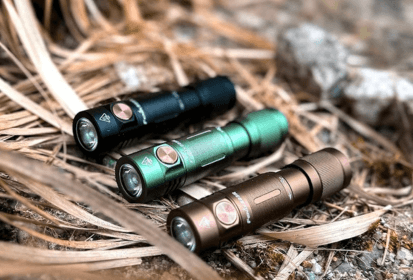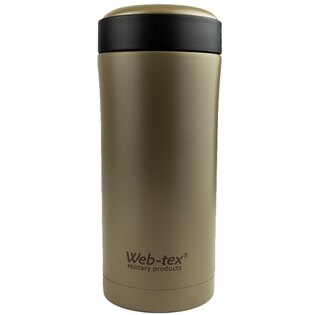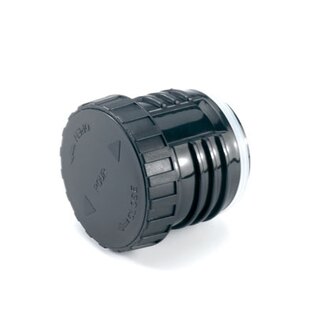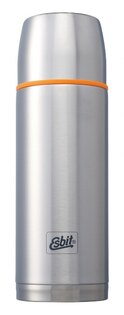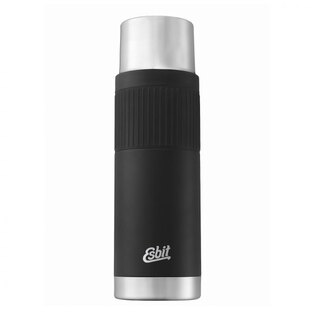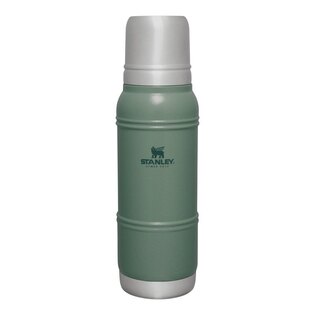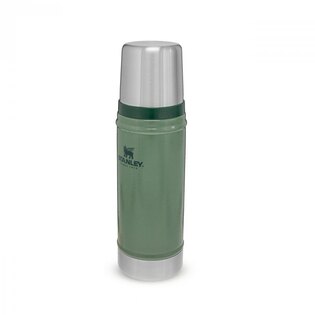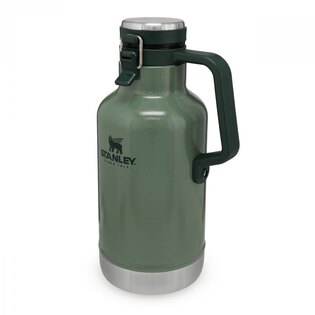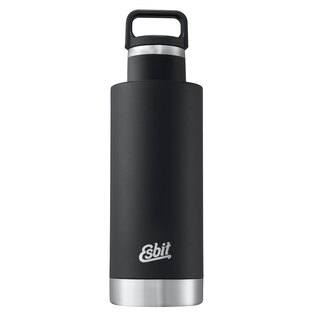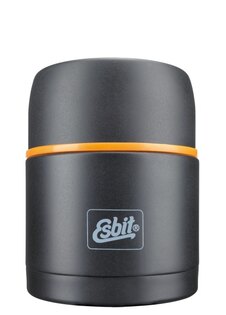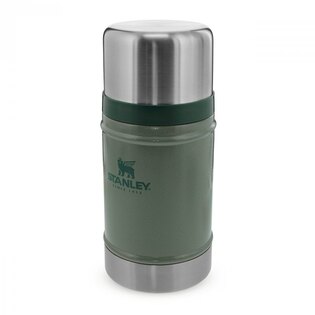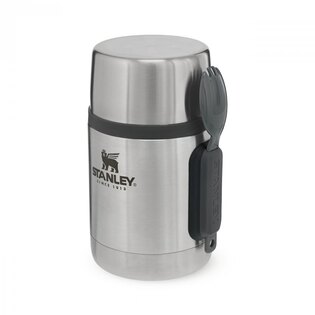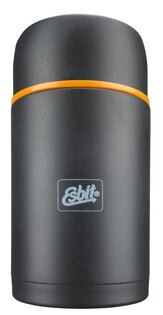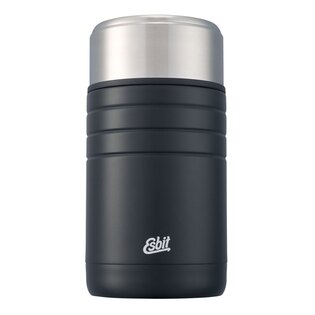7 tips for choosing the best thermos for outdoor activities
How to choose the right thermos (not just) for your outdoor activities? There are countless thermoses on the market today – from the cheapest ones to models costing several hundreds. There is no need to ruin yourself on a thermos the top features of which you may not even use. But it is definitely worth investing a little in it and choosing one that you can rely on under all circumstances. Cold tea after a few hours of climbing hills is not exactly the ideal reward. Read on to find out which 7 criteria to follow when choosing so you don't miss out!
1) Insulation properties
The first thing you will want to know when choosing (not only) an outdoor thermos is the insulation. Fortunately, the choice in this regard is not too complicated, because the best choice is clearly double-walled vacuum insulation. In the past, thermos were produced that had a vacuum layer between the outer steel and inner glass walls. This was because the production technologies of the time did not allow for the efficient production of a double-walled stainless steel container with a vacuum layer.
Fortunately, such a solution exists today, which has at least one major advantage – these thermoses last longer and at the same time you do not have to compromise on insulation. The weakest link in a thermos is of course the lid, but if the insulation of the rest of the container is of good quality, then it takes a long time for the drink inside to cool down (or, conversely, warm up).

A quality thermos can keep a hot drink hot for up to 24 hours.
The time factor
This brings us to another factor that needs to be considered when buying a thermos, namely the time stated by the manufacturer for the drink to remain in the thermos at the right temperature we want it to be.
How long can a commonly sold thermos of reasonable quality actually maintain the temperature of its contents? This depends not only on the quality of workmanship, but also on its volume, which we will talk about later. A quality thermos can keep a hot drink hot for up to 24 hours.
After this time, the drink will of course not have its original temperature, which is close to boiling point, but tea or coffee can be drunk even if it is around 50-60 °C; the temperature should not go lower even after 24 hours in a quality thermos. For some thermoses, the dissolution time (something like the half-life) of crushed ice is also given as a selection factor – the quality ones have this factor set in the order of days.
Vacuum as the best insulator
Vacuum is the best insulator, which practically does not transfer heat. According to the laws of physics, the temperature between two adjacent places equalizes until it is finally the same. Which is something we do not want at all in a thermos. Therefore, it is advisable to use the best available tools to slow down the heat transfer as much as possible.
We do not recommend the cheapest plastic thermoses at all, because instead of vacuum, they use foam as an insulator. However, it is not perfect and provides room for significant heat leaks. This is precisely why cheap thermoses do not retain the temperature as well and for as long as more expensive and better quality ones.
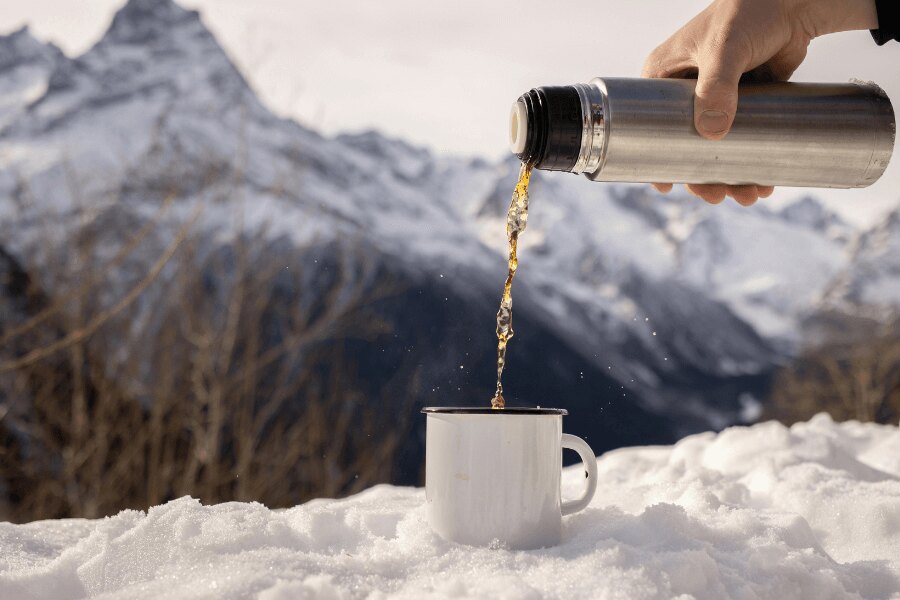
A stainless steel thermos offers a decent price/performance ratio. But it also depends on the quality of workmanship and other factors.
2) Material and weight
We have already cracked on the issue of material. Not quite literally. Thermoses made of quality materials should not be easy to crack. In any case, the aforementioned stainless steel is a heavier option, but it is very durable. However, there are also plastic or aluminum thermoses that are perfectly adequate, especially for shorter trips. But if you want maximum and yet affordable quality, go for steel.
However, it is essential for plastic that it does not contain harmful bisphenols and is labeled BPA Free, or that it does not contain phthalates. By the way, this is exactly the reason why it is not worth experimenting and buying second-hand retro thermoses. They may have an impressive design, but who knows what their material contains. If it is plastic (but this also applies to aluminum), then for health reasons it is better to buy a completely new one. But again – the cheapest dubious models of thermoses can contain harmful substances even when new, because they probably do not have the appropriate certification at all.
As a specialty, we will also mention titanium thermoses, which are even more durable and certainly lighter than stainless steel ones. But you will simply pay extra for such luxury.

Choose the capacity of the thermos according to your needs. If you only need a quick coffee (or two) on the way to work, you can also reach for an equally high-quality and practical thermos mug.
3) Tightness and resistance to leakage
At Rigad.com, you have one advantage, which is the certainty that the thermos offered by us are really tested and will seal well. It is not very nice to find a backpack full of coffee that has leaked due to a leaky lid at the beginning of a multi-day hike. When buying a thermos, always make sure that the thermos has a quality seal and closure. If this is part of the manufacturer's marketing claims and does not correspond to reality, you are entitled to a complaint and exchange the thermos for another, or a refund.
It is better to check the tightness of the thermos immediately after it arrives at your home (or you bring it home yourself). This way you will not be surprised when you actually need the thermos. Try turning a full thermos upside down at night or leaving it on its side in a canvas bag, for example in the sink or bathtub. If the bag is not wet by morning, you can safely pack the thermos into the field.
Just for completeness, we must also mention the thermos cap (lid), which is most often available in two versions. This is a screw lid "activated" by turning and a pop-up lid with a button. The lid is often combined so that the attachment to the thermos body is threaded and the pouring "spout" is pop-up.
4) Capacity of the thermos
This is one of the most important factors when choosing a thermos. It really depends on your needs, for example how long your hikes are and what your typical drinking regimen is. In other words, whether you can handle two coffees a day and supplement your fluids with water from a hydration pack or bottle, or whether you prefer tea all day long in the winter months.
Basically, if your goal is to warm up with coffee twice a day, a thermos with a capacity of about 300 to 500 ml will be enough. If you are going on a day-long hike or want to share your coffee or tea with friends, then a larger option (at least 750 ml) will be more suitable. And if you want to have hot tea (or ice-cold water in the summer) available all day long, then you should go for even larger volumes. The most commonly sold thermos have a capacity of about 500 ml to 1 liter.
When choosing a thermos by size, you should also keep in mind that the larger the volume, the more the container will weigh you down, because it will simply be heavier. Therefore, compromises need to be made, especially on expeditions where every gram counts.
5) Design of the thermos and its function
Although design is not the most important factor, it should not be underestimated. And now we do not mean only the appearance of the thermos, although that also plays a role. We are more referring to practicality and accessories that will be useful for everyday use. These include, for example, an ergonomic handle to facilitate handling of the thermos, a non-slip (rubberized) surface for a better grip or a lid that can be used as a mug. These and other practical details can have a significant impact on the comfort of use, especially in more demanding conditions.
The rubberized surface is not only suitable for a better grip, but also implies that the thermos could be more durable when used in extreme situations. If a rubberized thermos falls to the ground, it will probably not break that easily. Unlike the one without a surface treatment. And the narrow shape of the thermos makes it easier to fit it in, for example, the side pocket of a backpack.
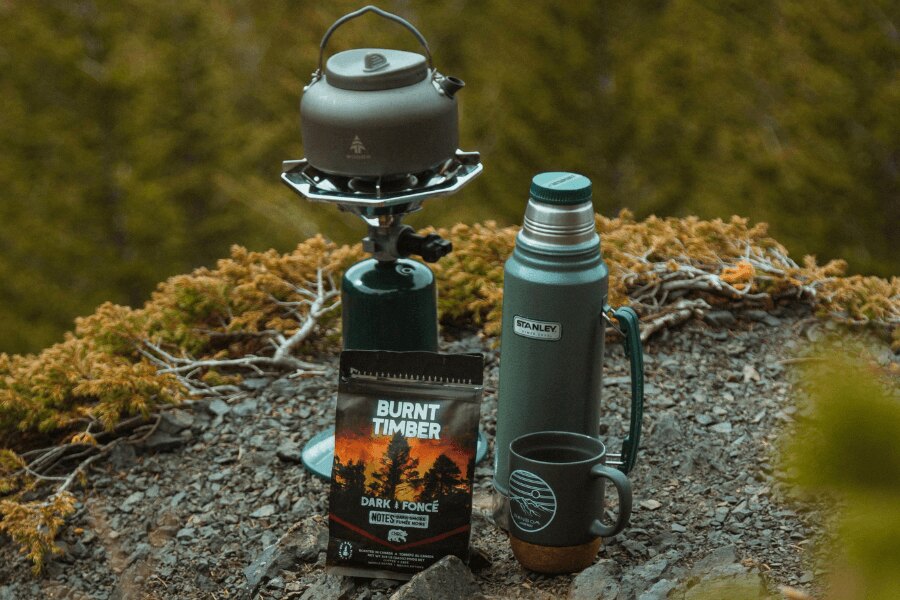
Stick to proven brands and follow user reviews. Stanley thermoses are among the brands with a good reputation.
6) Customer reviews and the brand
It is often worth investing in a proven brand. The advantage of the assortment at Rigad.com is that you cannot even get products from other brands here. Brands such as Esbit or Stanley have a good reputation in the world, but models from other manufacturers such as Big Frig, Mizu or Tasmanian Tiger are also starting to gain popularity. Before buying a thermos, you can also read reviews from other users, which will give you a real idea of the advantages and disadvantages of a given model.
7) Get a food thermos
In addition to thermos for drinks, Rigad also offers thermos for food. They differ mainly in shape – they are usually lower and wider. This is so that you can comfortably eat from them as if from a bowl and you can simply use cutlery to get all the contents from inside until the last bite. Thermos for food usually have a screw cap and have exactly the same purpose as those for drinks – to keep the contents inside at the desired temperature for as long as possible.
Thermos for food are suitable not only for outdoor activities, but also for school or the office. If you buy a thermos for food for each member of your family, you can ultimately save significantly. Investing in a quality thermos is a one-time investment. If you cook more portions in the evening or in the morning before going to work (or heat up pre-prepared food), you don't have to think about where to go to eat at noon. You will get quality, homemade and honest food that you won't have to eat cold or heat up in the microwave.
When it comes to the size of thermoses for food, it's best to use common sense. It's similar to the volume of thermoses for drinks, so 300 to 500 ml will be enough for smaller lunches or children's portions, a slightly larger volume will be enough for one adult portion, and finally, the largest thermoses with a volume of 1 liter or more will provide enough food for an individual for the whole day, or lunch for the whole family.
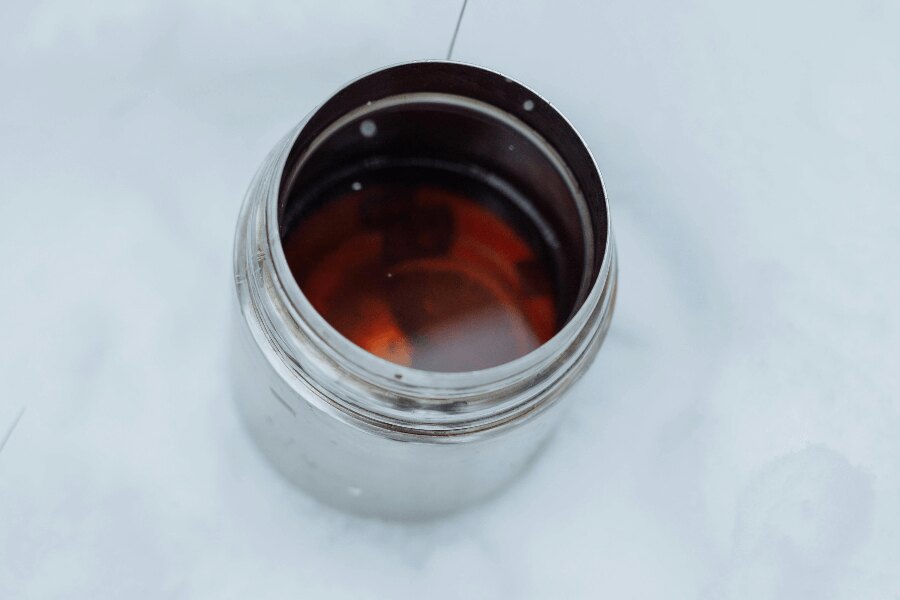
Thermoses for food usually have a wider neck so that you can eat from them comfortably. But they are also suitable for drinks.
In conclusion
It probably goes without saying that choosing the best thermos for outdoor activities depends on your specific needs and preferences. The key is to find the right thermos that will keep your drink hot or cold (depending on your current requirements) for a long time, be durable enough to be used in demanding conditions, and at the same time be practical and comfortable to use. Take the time to choose it and invest in a quality product. It will reward you with a long service life and your stay in nature will then be much more enjoyable.
And one more small tip to conclude – before using it, heat the thermos with hot water, or cool it with ice so that its insulating layer is more effectively prepared for your drink. This way you will achieve better temperature retention.
Readers are further interested
